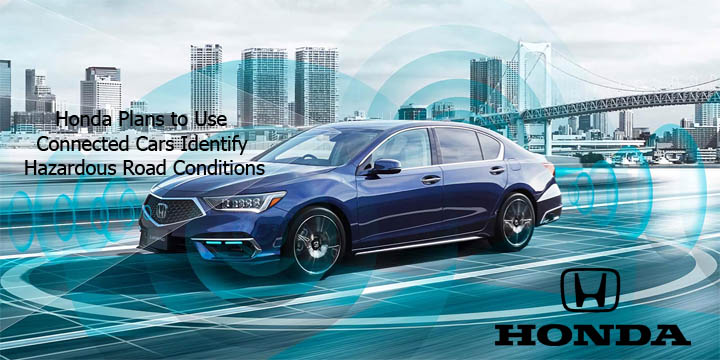Honda Plans to Use Connected Cars Identify Hazardous Road Conditions. Honda has announced an experiment to use its cars to collect data about hazardous road conditions.

Using GPS and cameras, the Japanese automaker is gathering real-time road information about poor lane markings or potholes, which it can then send to municipalities for future improvements.
According to The verge, the pilot project, which is being run out of the Honda Research Institute, is the first to use connected vehicle technology to capture accurate data on road conditions, the company said.
To start out, Honda is collaborating with one state, the Ohio Department of Transportation, and plans to start providing road condition data in early 2022.
Honda Plans to Use Connected Cars Identify Hazardous Road Conditions
“Maintaining good road conditions helps keep everyone sharing the road safely,” said Paritosh Kelkar, a scientist at Honda Research Institute USA and project leader of the road condition monitoring system, in a statement.
“Real-time, high-accuracy roadway data captured from connected vehicles have the potential to improve the process of identifying, reporting, and more quickly repairing hazardous road conditions.”
Honda’s Cars Will Visually Classify Lane Lines
Honda’s cars will visually classify lane lines to the left and right of the vehicle using four-color codes. Green and yellow classifications, respectively, indicate ideal to a good lane marking conditions, while gray means no lane lines and red means the lane markings need repair.
Honda will also collect longitude and latitude coordinates, along with relevant images and video clips, which it then anonymizes and streams to a “secure platform” for analysis.
Road operators will have access to the platform to identify the location, type, and severity of the road condition and hazard information, and obtain a still image and video.
Technology to Increase Road Safety
In some ways, Honda’s pilot could be considered a more targeted version of connected vehicle technology that has been promised for many years but has failed to emerge.
For years, the auto industry has promised vehicle-to-everything (V2X) technology to increase road safety by allowing vehicles to communicate with one another, as well as smart infrastructure like traffic signals, to better avoid crashes or other mishaps.
Some experts say the wide deployment of the technology could help speed the adoption of self-driving cars, which could use vehicle-to-vehicle (V2V) or vehicle-to-infrastructure (V2I) communications to bolster their ability to “see” their environment and make better driving decisions.
Automakers are trying to get the Federal Communications Commission to roll back its decision to take away the current airwaves dedicated to that technology.
But the auto industry was slow to develop V2X technology, and the rollout has been piecemeal. Mercedes installed V2V equipment in both the 2017 E-Class and 2018 S-Class.
General Motors also introduced V2V in the Cadillac CTS in 2017. Other automakers began looking closely at a newer technology called cellular V2X (C-V2X), using existing cell networks to send communications.
